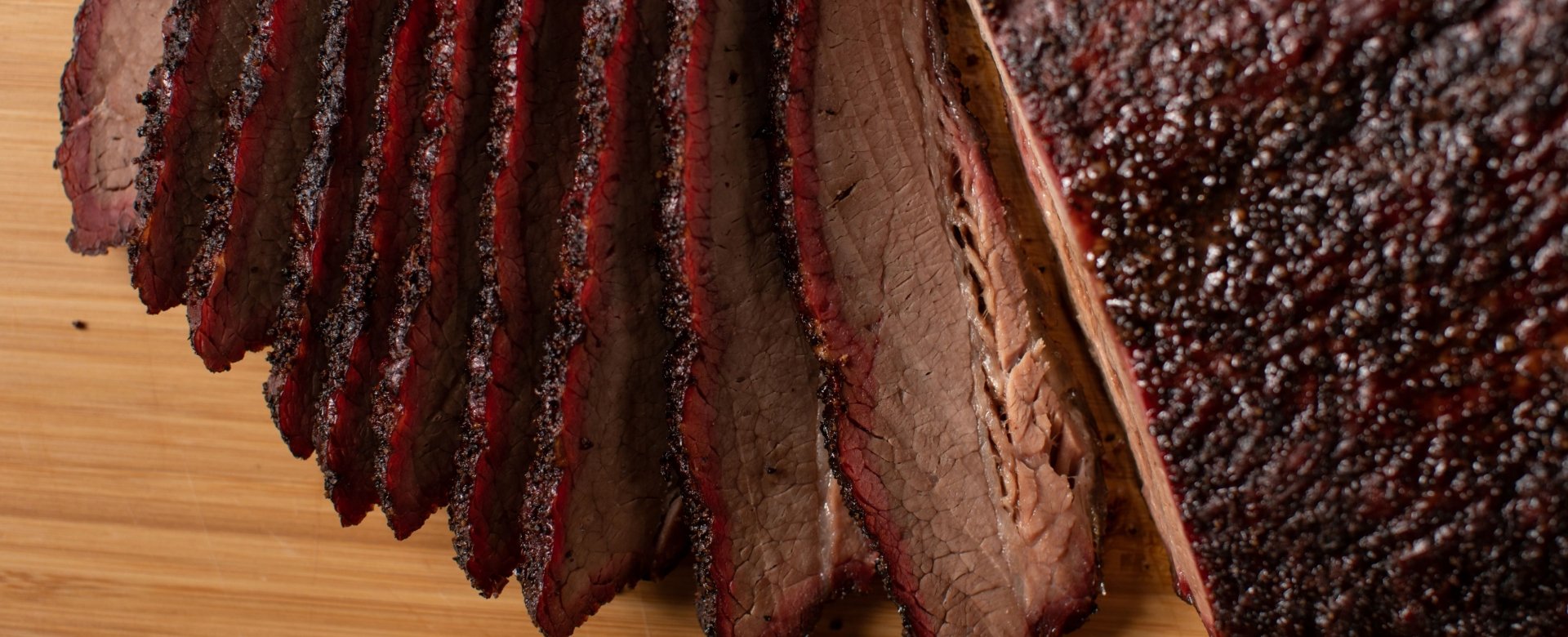When you think of competition, wood-fired barbecue, you probably picture the legendary pink smoke ring that circles the meat like a halo. That one mark says it all: authentic wood fire and incredible taste. It's the proof of a true BBQ master.Or is it?In reality, the smoke ring we all know and love has less to do with smoke and more to do with science.In the world of BBQ, where every pit master has his or her own homegrown secret, getting down to the science behind a smoke ring may seem strange. However, the more you know about what that ring is and how it develops, the closer you can get to achieving your very own mark of mastery.And don't worry-we're serving it up to you nice and easy. No chemistry degree required.
What is the Smoke Ring?
If you've done any digging into research on smoke rings, you've probably heard of myoglobin. It's a molecule that stores oxygen inside muscle tissue. More importantly for our purposes, it's the thing that gives meat its color.The color of meat changes based on how much oxygen it is exposed to at the time. With high oxygen (like the raw meat that has just been butchered) the color is a bright red. With low oxygen, like old packaged meats, the color can turn brown. This color can continue to change even after the meat has been butchered and sold-it all depends on how much oxygen the myoglobin can grab. That's why leaving a piece of raw meat out can turn it pinker. When you heat myoglobin in beef to around 145-175° F, it starts to fall apart and turn gray-a color that any steak lover will recognize. And once it does that, it will remain that color permanently.However, the myoglobin can bond to carbon monoxide (CO) and nitric oxide (NO) during the cooking process and retain its pink color instead of turning gray. Those two molecules-CO and NO-both come from burning real wood. Thus, you can get a great smoke ring from a wood-burning pellet grill but not from a gas grill (unless you throw some wood pellets in there).A smoke ring is formed when myoglobin bonds with either CO or NO. But those molecules can only penetrate so deep into the meat. That's why your smoke ring is a "ring" around the outer layers of the meat, usually less than an inch deep.
Enough Science-What's the Secret?
Now that you understand the "what" behind a smoke ring, you can start working on the "how." Barbecue lore and myth aside, here are some real, actionable tips you can use to foster the best smoke ring possible.
- Make sure you're using a fuel with a high nitrogen content-namely, pure hardwood pellets. The more nitrogen in your fuel, the more nitric oxide there will be to create the smoke ring.
- Start with dry fuel. Never allow your wood pellets to get wet, as this will cause them to swell (which could be bad for your auger) and smolder rather than burn. You need combustion from fire to get the NO molecules you want, so make sure your pellets are burning dry.
- Keep your grill on a low temperature, especially for the first hour of the cook. This is when your meat will absorb the most NO. If you're able to keep the heat low, around 225° F for the first hour, you'll probably have a great smoke ring at the end.
- Open up the smokestack on your pellet grill to allow for enough oxygen flow.
- If the weather is warm enough for your pellet grill to handle it, cook your meat while it's still cold rather than letting it reach all the way to room temperature. The myoglobin will stay under its breakdown temperature for longer, so it will have more time to bond with the NO. Additionally, more smoke will condense on the cold surface, giving you a great ring and a great flavor.
- Trim as much fat off as you can. If the layer of fat on the outside of your meat is too thick, the CO and NO won't be able to penetrate deeply enough to reach the myoglobin.
- Avoid rubs that are highly acidic or with high salt content. Both of these will inhibit the smoke ring.
- You may want to spritz the meat once or twice during the first hour or so of cooking, as more smoke will stick to the water. Many outdoor cooks like using apple juice for this. You don't want the meat soaked-just enough to keep moisture on the surface.
Have you found any tips that work wonders for getting a great smoke ring? Are you going to try one of these tips? Let us know in the comments! If you'd like to learn more about the science behind smoke rings and smoking meats, check out this page. And if you're ready to fire up the grill and get smoking, check out our pellet grill lineup!

